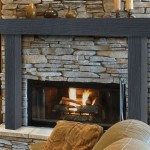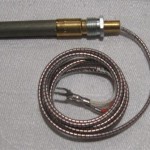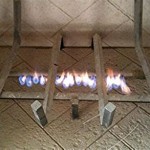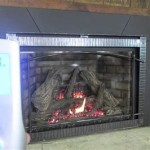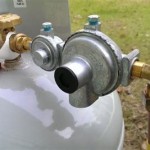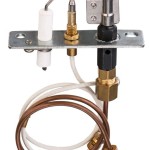Corner Fireplace Wall Unit: A Comprehensive Guide
A corner fireplace wall unit represents a significant investment in home aesthetics and functionality. It serves as a focal point in a room, enhances the ambiance, and can provide supplemental heating. Understanding the various design options, installation considerations, and benefits is crucial for making an informed decision regarding the integration of this architectural element into a residential space.
The popularity of corner fireplace wall units stems from their ability to maximize space utilization, particularly in rooms with unconventional layouts or limited wall space. By nestling into a corner, the unit avoids monopolizing a central wall, allowing for more flexible furniture arrangement. Further, the selection process necessitates a thorough evaluation of space constraints, heating requirements, and the desired aesthetic.
Maximizing Space and Design Flexibility
One of the primary advantages of a corner fireplace wall unit is its efficient use of space. Traditional fireplaces often require a significant portion of a wall, potentially limiting furniture placement and overall room design. Conversely, a corner unit occupies an otherwise underutilized area, freeing up valuable wall space for other purposes such as entertainment centers, shelving, or artwork.
Design flexibility is another key benefit. Corner units are available in a wide range of styles, from classic and traditional to modern and minimalist. Materials can vary from brick and stone to wood and metal, allowing homeowners to customize the unit to seamlessly integrate with their existing décor. Moreover, the surrounding wall unit can be designed to incorporate storage, display shelves, and media components, creating a cohesive and functional entertainment area.
The adaptability of corner fireplaces extends to their fuel source. Options include wood-burning, gas, and electric models, each offering distinct advantages. Wood-burning fireplaces provide the authentic crackling sound and aroma that many find appealing, while gas fireplaces offer the convenience of instant ignition and adjustable flame settings. Electric fireplaces are the most versatile in terms of placement, as they do not require venting and can be installed virtually anywhere with an electrical outlet.
Choosing the appropriate size of the corner fireplace wall unit is also crucial for maintaining balance and proportion within the room. A unit that is too large can overwhelm the space, while one that is too small may appear insignificant. Careful consideration should be given to the room's dimensions and the scale of surrounding furniture to ensure that the fireplace unit complements the overall design.
Beyond the aesthetic considerations, the corner placement can also impact the fireplace's heating efficiency. The corner location can help to distribute heat more evenly throughout the room, as the heat radiates outwards from two walls. This can be particularly beneficial in larger rooms or open-concept spaces where maintaining a consistent temperature can be challenging. However, proper insulation and ventilation are essential to maximize heating efficiency and prevent heat loss.
Installation Considerations and Safety Standards
The installation of a corner fireplace wall unit is a complex process that requires careful planning and adherence to safety standards. Different fuel types necessitate different installation procedures. Wood-burning fireplaces require a chimney for venting smoke and combustion gases, while gas fireplaces require a gas line connection and proper ventilation. Electric fireplaces, on the other hand, are relatively simple to install, requiring only an electrical outlet.
Before beginning the installation process, it is essential to consult with local building codes and regulations to ensure compliance. These codes typically specify requirements for chimney height, clearance distances from combustible materials, and the type of materials that can be used in the construction of the fireplace surround. Failure to comply with these regulations can result in fines or the need to dismantle and rebuild the fireplace.
For wood-burning and gas fireplaces, professional installation is highly recommended. Qualified technicians have the expertise and equipment to ensure that the fireplace is properly vented, that the gas line is securely connected, and that all safety standards are met. Improper installation can lead to carbon monoxide leaks, chimney fires, and other hazards.
The construction of the wall unit surrounding the fireplace also requires careful consideration. The materials used must be non-combustible and able to withstand the high temperatures generated by the fireplace. Common materials include brick, stone, concrete, and metal. Wood can be used as trim, but it must be properly insulated and kept a safe distance from the firebox.
Proper ventilation is crucial for all types of fireplaces, but especially for wood-burning and gas models. A properly designed chimney or vent allows for the efficient removal of smoke and combustion gases, preventing them from entering the home. Regular chimney inspections and cleaning are essential to maintain proper ventilation and prevent chimney fires.
Safety measures such as installing smoke detectors and carbon monoxide detectors are paramount. These devices provide early warning of potential hazards, allowing occupants to evacuate the home quickly in the event of a fire or gas leak. Regular testing of these detectors is essential to ensure that they are functioning properly.
The area surrounding the fireplace should be kept clear of flammable materials such as rugs, curtains, and furniture. A fire screen or glass door can help to prevent sparks from escaping the firebox and igniting nearby materials. Children and pets should be supervised around the fireplace to prevent accidents.
Material Selection and Maintenance
The choice of materials for a corner fireplace wall unit significantly impacts its aesthetic appeal, durability, and maintenance requirements. Common materials include brick, stone, wood, metal, and manufactured alternatives, each offering distinct advantages and disadvantages.
Brick and stone are popular choices for their classic and timeless appeal. They are durable, fire-resistant, and require minimal maintenance. However, they can be relatively expensive and may require professional installation. The natural variations in color and texture of these materials add character and visual interest to the fireplace.
Wood provides a warm and inviting aesthetic, but it must be properly treated and protected from heat. Wood can be used for the mantel, surround, and shelving, but it should not be placed too close to the firebox. Regular cleaning and maintenance are necessary to prevent damage from heat, moisture, and insects.
Metal is a versatile material that can be used to create a modern and contemporary look. It is durable, fire-resistant, and easy to clean. Metal can be used for the firebox, surround, and decorative accents. Stainless steel, wrought iron, and copper are common choices for fireplace applications.
Manufactured stone and brick veneers offer a cost-effective alternative to natural materials. They are lightweight, easy to install, and available in a wide range of styles and colors. However, they may not have the same durability and longevity as natural materials. Regular cleaning with a mild detergent is typically sufficient to maintain their appearance.
Maintenance of a corner fireplace wall unit varies depending on the fuel type and materials used. Wood-burning fireplaces require regular chimney cleaning to remove creosote buildup, which can cause chimney fires. Gas fireplaces require periodic inspections to ensure that the gas line and burner are functioning properly. Electric fireplaces require minimal maintenance beyond occasional cleaning.
The surrounding wall unit should be kept clean and free of dust and debris. Wood surfaces should be treated with a protective finish to prevent damage from moisture and sunlight. Stone and brick surfaces can be cleaned with a mild detergent and water. Metal surfaces should be cleaned with a non-abrasive cleaner to prevent scratching. Regular maintenance will help to prolong the life of the fireplace and maintain its aesthetic appeal.
The overall design of the corner fireplace wall unit should complement the existing décor of the room. Consider the color scheme, style, and scale of surrounding furniture when selecting materials and finishes. Adding decorative elements such as artwork, plants, and accessories can further enhance the visual appeal of the fireplace.
Finally, ensure the corner fireplace wall unit provides ample storage and display space. Shelves can be used to showcase books, photos, and other decorative items. Cabinets can be used to store media components, firewood, or other household items. A well-designed wall unit can significantly enhance the functionality and aesthetic appeal of the room.

Sleek Corner Fireplaces With Modern Flair Fireplace Built Ins Family Room Design Traditional Living

Working With A Corner Fireplace Emily Clark Living Room Built In Shelves Ins

Corner Fireplaces Give Rooms A Design Edge

Arranging Furniture With A Corner Fireplace Brooklyn Berry Designs

Wall Mounted Fireplace Corner Design Ideas Living Room With Contemporary

Free Standing Corner Fireplace Console For An Led Electric Insert Custom Size Color Solid Wood Mantel Farmhouse Style Wall Unit Tv Stand

How To Design Around A Corner Fireplace

Stylish Corner Fireplace Entertainment Center With Art On A White Wall

Corner Fireplaces Modern The Davinci Collection

Electric Fireplace Gallery Touchstone Home S Inc
Related Posts

